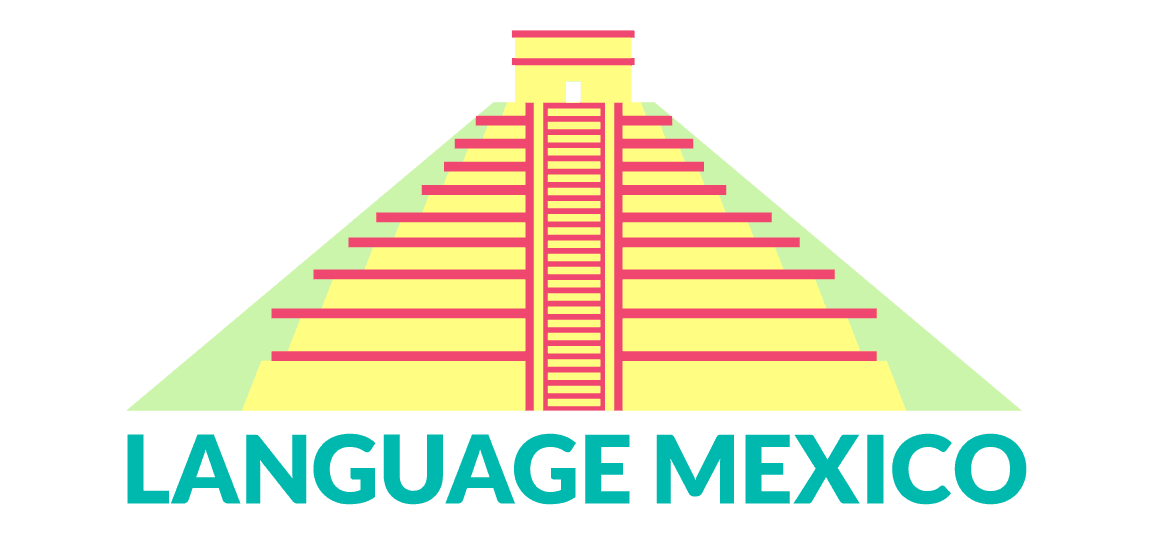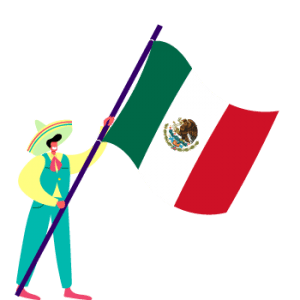
What language is spoken in Mexico?
Mexico
Spanish is spoken in Mexico, but it’s not the only language you’ll hear there. More than half of the population speaks an indigenous language, according to Mexico’s national census bureau, INEGI.
The country has documented and recognized the indigenous languages of Mexico since 1932, when Article 3 Section VII of the Constitution of Mexico adopted a law that recognized these languages as national languages, along with Spanish. So if you’re planning to visit or live in Mexico, understanding what languages are spoken in Mexico can be very helpful!
Spanish: Still number one
The official language of Mexico is Spanish. (Mexican Spanish, not Castilian.) Surprisingly, even though Spanish is the dominant language in Mexico, Mexican law does not recognize it as an official language. Mexican Spanish varies slightly from what you’d hear in Spain or Latin America, but there’s no mistaking it.
One of Mexico’s nicknames is El país de las Maravillas, the country of wonders. How so? Well, for starters: At least seven different dialects are used throughout Mexican territory and several indigenous languages are still spoken today. So yes, If you want to visit Mexico and understand what people are saying around you—or even if you want to be able to read street signs—you should learn some basic Spanish before your trip!

Mexican Spanish vs. Spanish in Spain or Latin America
Mexican Spanish is just one of the many different dialects of Spanish. While Spanish in Spain and Latin America are similar, there are also some significant differences. The biggest differences between Mexican Spanish and Spanish spoken in Spain and Latin America are pronunciation, vocabulary, and grammar.
One of the most significant differences between Mexican Spanish and Spanish spoken in Spain and Latin America is the pronunciation. In Mexico, Spanish has been influenced by indigenous languages like Nahuatl, so the pronunciation is often quite different from other dialects.
For example, words that end in “-tl” are usually pronounced with a “t” sound instead of a “tl” sound. Another key difference is the use of single informal language. In Mexico, it is widespread to use colloquial language in everyday conversation. This is not as common in Spain and Latin America, where people tend to be more formal.
Another difference between Mexican Spanish and Spanish spoken in Spain and Latin America is the vocabulary. In Mexico, many words are unique to the Mexican Spanish dialect. For example, the word “chido” describes something cool or awesome. This word is not used in other Spanish-speaking countries. Many words are borrowed from indigenous languages. For example, “Cuauhtemoc” is a Nahuatl word that means “eagle.”
One final difference between Mexican Spanish and Spanish spoken in Spain and Latin America is the grammar. In Mexico, the informal second-person singular pronoun “vos” is widespread. This pronoun is not used in other Spanish-speaking countries. Another key difference is the word “ustedes” to refer to a group of people.
In Mexico, “ustedes” is always used, even when talking to a group of friends. In Spain and Latin America, “vosotros” is used when talking to a group of friends, and “ustedes” is used when talking to a group of people that includes strangers. But Spanish speakers around the world can all understand one another. Do you need translation services? Check out this link.

Spanish vs. Mexican Grammar
Spanish and Mexican grammar have many similarities, but some crucial differences exist. These differences can be traced back to the different origins of the two languages. Spanish is a Romance language, while Mexican is a mix of Spanish and indigenous languages. As a result, Spanish grammar is more similar to other Romance languages like French and Italian, while Mexican grammar has more in common with indigenous languages like Nahuatl.
One of the most important differences between Spanish and Mexican grammar is the use of gender. In Spanish, all nouns are either masculine or feminine, affecting the form of adjectives and articles. For example, the word for “book” is masculine in Spanish, so the phrase “the book is red” would be “el libro es rojo.” In Mexican, however, gender is not always used. This can make it difficult for Spanish speakers to form phrases correctly.
Another difference between Spanish and Mexican grammar is the use of the subjunctive mood. The subjunctive mood is used to express doubt, uncertainty, or desire. In Spanish, the subjunctive mood is used more often than in Mexican. This is because Spanish has a more formal register than Mexican. As a result, the subjunctive mood is often used in Spanish to express polite requests or wishes.
Finally, Spanish and Mexican have different verb conjugations. In Spanish, verbs are conjugated according to the subject, while in Mexican, they are not. It would be best if you changed the verb’s ending to match the subject in Spanish. For example, the verb “to read” is “leer” in Spanish.
If the matter is “I,” the verb would be conjugated to “leo.” If the issue is “you,” the verb would be conjugated to “lees.” In Mexican, verbs always stay the same, no matter the subject. This can confuse Spanish speakers, who are used to changing the verb to match the subject.
Is Spanish in Spain the same as Mexican Spanish?
Spanish in Spain is derived from Latin, while Mexican Spanish is derived from Latin and Nahuatl, the language of the Aztecs. As a result, there are some significant differences between the two languages. For example, Spanish in Spain uses the formal usted pronoun, while Mexican Spanish uses the informal tu pronoun. Nevertheless, the two languages are both mutually intelligible.
What is the primary language spoken in Mexico?
Spanish is the primary language spoken in Mexico. Mexico has a vibrant culture, and the language is an integral part of that. Spanish is the official language of Mexico and is spoken by most of the population. There are, of course, other languages spoken in Mexico, but Spanish is by far the most prevalent.
What are the top 3 languages spoken in Mexico?
According to Ethnologue, Spanish is the most spoken language in Mexico, with over 121 million speakers. The second most common language is Nahuatl, with 1.7 million speakers. Nahuatl is spoken mainly in central Mexico. The third most common language is Maya, with 1 million speakers. Maya is spoken primarily in southern Mexico.
Spanish vs. Mexican Pronunciation
There are many differences between Spanish and Mexican pronunciation. The most noticeable difference is how the two languages handle the letter “x.” In Spanish, the letter “x” is always pronounced like the “ks” sound in the word “fox.” In Mexican Spanish, however, the letter “x” can be pronounced either as the “ks” sound or as the “sh” sound, depending on the word.
Another significant difference between the two pronunciations is how the letter “c” is pronounced. In Spanish, the letter “c” is always pronounced like the “th” sound in the word “thin.” In Mexican Spanish, however, the letter “c” can be pronounced either as the “th” sound or as the “s” sound, depending on the word.
There is a difference in how the two languages handle the letter “g.” In Spanish, the letter “g” is always pronounced like the “h” sound in the word “house.” In Mexican Spanish, however, the letter “g” can be pronounced either as the “h” sound or as the “g” sound, depending on the word.
These are just a few differences between Spanish and Mexican pronunciation. In general, Spanish pronunciation is more consistent and predictable than Mexican pronunciation. However, Mexican pronunciation is more flexible and can be adapted to different words and situations.
Náhuatl and Maya
There are 17 indigenous languages (plus four international ones), corresponding to 23% of all Mexicans. The first official language of Mexico, however, is Spanish, and it’s spoken by over 99% of the population.
The two most important indigenous languages are Nahuatl, spoken by over a million people in Central America and northern states like Hidalgo and Veracruz, and Maya, with about 2 million speakers in southern states like Chiapas and Yucatán. They’re so crucial that they’ve been declared national languages. The Mayan language is one of Mexico’s oldest, with written records dating back to 200 AD.

Chiapas, Yucatan, and Oaxaca are also essential for languages other than Spanish, especially Otomi. There are 1.8 million native speakers of this indigenous language in these states and a large community of Asian descendants who often speak other local native languages like Mixtec or Mazatec.
There are over 60 different native languages still spoken in Mexico today. The most common ones include Purhepecha (spoken by about 110,000 people), Mayo (over 100,000), and Tzeltal (over 75,000). Many have over 10 thousand speakers and are primarily located in central states like San Luis Potosi or Veracruz.
Other Languages Spoken In Mexico
In addition to Spanish, there are other languages spoken in Mexico. The indigenous population of Mexico speaks an array of native tongues, many of whom are endangered or extinct, with speakers dying off at alarming rates. So far, five languages have been made national Mexican languages: Nahuatl (spoken by just over 1 million people), Mixtec (about 300,000), Zapotec (50,000), Tzeltal (just under 30,000), and Tzotzil (10,000).
All told, 67 living indigenous languages were once spoken throughout North America, but now only 12% survive. There are also small pockets of Chinese-speaking immigrants from China’s Fujian province who live in Mexico City. A few hundred speak Cantonese, while a few thousand speak Mandarin.
There are also some English-speaking communities in Baja, California, where English is taught as a second language, and signs can be seen in Spanish and English. There are some German-speaking colonies in Pueblo. You’ll find French on menus and street signs here and there, thanks to colonization during France’s reign over Mexico.
One final primary language worth mentioning is Q’eqchi’, brought to Yucatan by Mayan refugees fleeing Guatemala’s civil war during the 1980s. It is spoken today by about 100,000 people across Chiapas, Quintana Roo, and Campeche states. However you slice it, though, Spanish remains dominant throughout Mexico – 95% of Mexicans speak it fluently, and roughly 90% use it regularly when conducting business or speaking with their families.
What Is The National Language Of Mexico?
Spanish is, of course, considered Mexico’s official national language, but so many other languages are used within Mexican borders. Over one hundred native dialects can be found within its borders, and countless others can be heard throughout Mexican communities abroad. These include French, Chinese, Japanese, Portuguese, and German.
In addition to these more popular languages being listened to around Mexico daily, indigenous groups continue to use their native tongue for communication within their families and communities. These common languages and dialects make up the languages of Mexico today.

Mexican Dialects
The official language of Mexico is Spanish; however, many different dialects of Spanish are spoken throughout the country. The most common Mexican dialects are Nahuatl, Mayan, and Pochutec.
In addition to Spanish, several other languages are commonly spoken throughout Mexico, including Zapotec, Mixtec, Otomi, and Tarahumara. These languages are not official Mexican languages; however, they can often be heard throughout cities in each state that speak these particular languages.
Mexican dialects reflect a rich linguistic tapestry influenced by historical events such as the Spanish conquest in the 16th century, shaping the linguistic landscape of Mexico City and the broader country. The Mexican government’s approach to bilingual education in the 20th century aimed to preserve the diversity of language families, including indigenous languages, alongside the dominant use of the Spanish language in official documents and foreign language interactions.
For example, Oaxaca City’s population speaks Mixtec as their first language. This means that even though it’s not an official Mexican language, you will likely hear people speaking it while visiting Oaxaca City. On top of all these official and unofficial languages, English is also widely spoken throughout Mexico.
Although it isn’t an official language, millions of Mexicans are fluent in English because they have learned it at school or watching American television shows or movies. So, what does this mean for travelers hoping to learn more about Mexican culture?
If you visit Mexico with plans on conversing with locals using your high school Spanish skills (or none at all), don’t worry too much! Most Mexicans would be happy to talk with you in any way possible – know that if you want to interact with a local community on a deeper level, learning some basic phrases could make your trip even more memorable!
FAQs
Is the Aztec language still spoken?
The Aztec language, Nahuatl, is not currently spoken as a first language by any indigenous people. However, there are an estimated 1.5 million people of Aztec descent in Mexico who still speak the language. It is also taught in some schools and universities.
How many languages are spoken in Mexico?
Mexico is a culturally rich country with a diverse history. It is home to many different languages, with Spanish being the most widely spoken. According to Ethnologue, an online database that catalogs the world’s languages, there are 364 other languages spoken in Mexico. The most common language spoken in Mexico is Spanish, followed by indigenous languages such as Nahuatl, Maya, and Zapotec.
Languages are spoken in Mexico percentage?
According to a recent study, approximately 93.8% of the population in Mexico speaks Spanish as their first language. Additionally, 5.4% of the population speaks Spanish and indigenous languages, such as Nahuatl or Maya. The remaining of the population speaks a variety of other languages, including English, French, and German.


Sorry, the comment form is closed at this time.